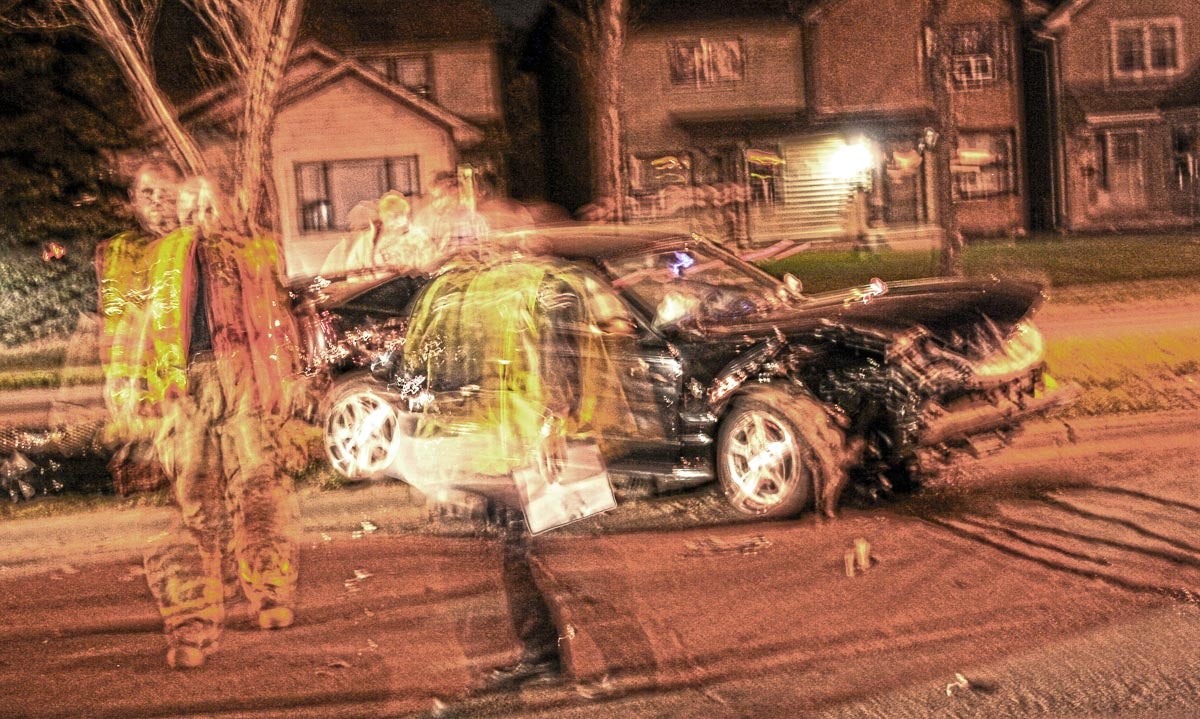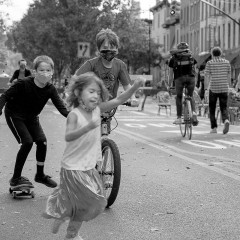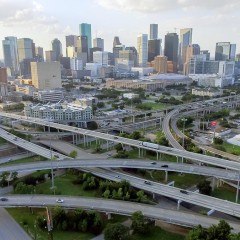Compared to 2019, all 80 of the largest U.S. cities experienced less traffic in 2020 — from 10% to as much as 47% less. Congestion levels fell as well, from 2% to as much as 15%. Houston saw 33% less traffic and the congestion level dropped from 24% to 16%. But by the end of the year, vehicle miles traveled in Texas totaled 293.4 billion, 1.75% more than in 2019.
As Texans, along with the rest of the world, completely recalibrated how they lived life, many began working from home while their kids sat in virtual classrooms in the next room or at the kitchen table. For a part of that period, the entire state was ordered to stay home as we did what we could (in varying degrees) not to catch or spread COVID-19.
However, a lot of the jobs that can be done from home tend to be higher-paying and require more education. At the same time, those working essential jobs like grocery store employees, delivery drivers and personal care assistants, who tend to be paid lower wages and are disproportionately people of color, couldn't afford to stay home. Not only were they placed at much greater risk of infection while at work, it seems they were also facing greater risk of something catastrophic while getting to work.
Last month, the National Highway Traffic Safety Administration released its early estimates for roadway deaths and fatality rates in 2020 by subcategory. Things like number of deaths by age group or ethnicity; how many of those who died were wearing a seat belt, how many were not; how many of those who died were ejected, speeding, impaired or in vehicles 10 years or older, et cetera. Overall, 38,680 people died on the nation’s roadways, 7% more than the previous year.
Monthly fatalities in March, April and May 2020 were down compared to 2019, decreasing 7% and 18% in March and April, before reversing course toward pre-pandemic levels. They were down just 2% in May, as many parts of the country began to reopen. And by June, they were 16.5% above that month’s total the year before. The biggest monthly spike was October’s almost 19%. The NHTSA points to risky driving behaviors such as not being buckled in, speeding and drinking while driving as factors contributing to the increase.
A number of categories of traffic fatalities showed troublingly large increases last year, but none more than the 23% jump in the number of Black people who were killed on America’s roads. An analysis of Texas Department of Transportation data shows that, from 2019 to 2020, the number of Black people who died in crashes in the state increased by 23% as well. Harris County saw traffic deaths among Black people go up by an astonishing 37%. At the same time, fatalities in the county increased by 11% for Hispanics and 5% for whites.
“Last year’s traffic fatality rates and the racial disparities reflected in them are unacceptable,” Secretary of Transportation Pete Buttigieg said in a statement regarding the findings in the NHTSA report. “This reflects broader patterns of inequity in our country — and it underscores the urgent work we must undertake as a nation to make our roads safer for every American.”
Buttigieg’s statement didn’t come until after CNN Business asked the NHTSA about Buttigieg’s “apparent silence on the new data.”
The population in Harris County is roughly 44% Hispanic, 29% white, 20% Black and 8% Asian. However, in 2020, African Americans accounted for 31% of motor-vehicle-related deaths, as did whites. Hispanics accounted for 34%, and 3% of those killed were Asian. In 2019, the shares of deaths were 35% Hispanic, 34% white, 26% Black and 3% Asian.
The deaths comprise all those that resulted from a motor vehicle crash, including drivers and passengers of cars, trucks and vans as well as motorcycles, and pedestrians and people on bicycles. Pedestrians, the TxDOT data show, made up 30% of Harris County road deaths in 2020. And across race and ethnicity, pedestrians made up a similar share of fatalities: 30% of Asian, 35% of white, 28% of Hispanic and 27% of Black road deaths.
Black people, however, comprised the greatest share of bicycle riders who died within the county, 42% of deaths compared to whites and Hispanics, who made up 38% and 19%, respectively.
And the deadly trends have only worsened in 2021, as the pandemic seems to be waning and congestion levels move back toward what used to be normal. In the first six months of this year, 1,721 people have died on roads in Texas — 20% more than in the first half of 2020. In Harris County, 225 have died, an increase of 22%.
Road deaths are up overall in Harris County, relative to the first half of 2020, but they’ve increased the most among Black people, going up by 43%, from 53 to 76. And compared to 2019, before the pandemic, the number of Black people killed on the county’s roads this year has increased 62%. The percent increases in the first half of 2021 have been much lower for whites (19%) and Hispanics (8%).
Many more deaths outside Loop 610
From January through May of 2021, only 8% (19) of Harris County’s traffic fatalities have occurred within the 610 Loop — eight drivers, seven pedestrians, three passengers and one cyclist, according to TxDOT’s data.
That means the other 92% (206) of the 225 road deaths in Harris County happened outside of the Loop. That’s 107 drivers, 33 passengers, 57 pedestrians and six people on bikes. While Houston has made strides in bike safety and access, there is a glaring need for more similar infrastructure in the county’s suburbs.
“If you isolate the area inside the 610 Loop, all of a sudden you’ve got a city roughly the size of Boston or Baltimore, and that’s where pretty much all of the useful bike infrastructure (in Houston) is located,” says Joe Cutrufo of BikeHouston.
Speed-related deaths were up by 11% nationwide, but increased 25% in Region 6, which includes Texas, etc. Speed-involved crashes killed 115 people in Harris County last year, about 23% of road deaths in the county.
The default speed limit on Houston streets is 30 mph. If hit by a car going that fast, a person has about a one in four chance of surviving, according to the AAA Foundation for Traffic Safety. That stat doesn’t tell us the chances of escaping serious injury. If a person is hit by a vehicle going 23 mph, there’s a 10% chance they’ll be killed. As speed is increased, that risk quickly increases, to 25% at 32 mph, 50% at 42 mph and 75% at 50 mph.
Historically, road design has enabled and encouraged drivers to go fast — wide lanes, long stretches with few crosswalks and high posted speed limits.
According to the city’s High Injury Network, 60% of traffic deaths and serious injuries happen on 6% of Houston streets.
Houston’s Vision Zero commitment sets 2030 as the target date for ending traffic deaths and serious injuries in the city. Vision Zero uses the six E’s to eliminate serious crashes and fatalities: engineering, education, enforcement, engagement, evaluation and equity. Complete Streets is another city initiative to make roads less dangerous.
Of course, the city and a pledge alone can’t just make this happen. In addition to significant infrastructure investment and planning, it will require buy-in and participation from every person who uses the roads in Houston. Our collective interest in the common good doesn’t strike me as quite rock-solid enough to make this happen. That’s a lot of ground to cover in eight years and change. Considering the size of Houston, not to mention the rest of Harris County, that’s literally a lot of ground to cover.



